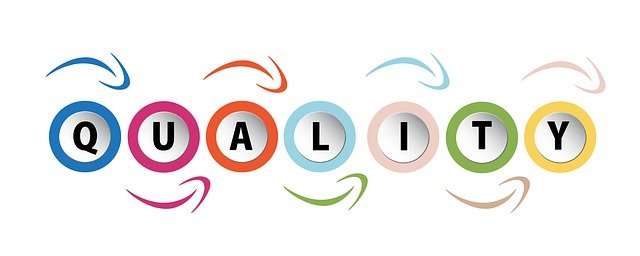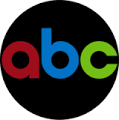
by Suellen | Email Marketing, Online Success
Compare your emails – one with another – and you’ll find what works best and improve your bottom line. That’s what testing is all about. And it’s easier than it sounds.
A/B testing, often called split testing, compares the results of two or more similar email campaigns or other materials sent to different audiences.
For instance, you can send one group (Group A) the subject line: Best Tips for Marketing. Then send the other group (Group B) the subject line: Professional Marketing Made Easy. To test, you would need to leave everything else the same. Send the same email at the same time with that that one difference. Then check your open rates and click rates. Which one did the best?
That’s A/B or Split testing in a nutshell. And you can – and should test for titles, time of day you send them, subject matter, and anything else you might think of.
After testing, you can use this information to determine which material converts the best. Thus, allowing you to perfect your email marketing campaigns and funnels more efficiently.
There are several reasons that A/B testing is essential to your email marketing process.
Split testing helps you increase your Open and Click-Through Rates
Improving your overall conversions is the main idea behind split testing. When you test and track these conversions, you can easily see how successful your emails are by how high or low the open and click-through rates are – and which ones are better performers.
Split testing helps you better understand your audience.
A/B testing allows you to watch the behavior of your audience, and see them interact with your content. If certain titles or graphics work better, then you can update your material to this effect. Thus, allowing you to communicate better and increase your overall email marketing conversions.
Split testing increases engagement and content quality
Through split testing, you discover the right ways to communicate with your target audience to improve the quality of your content. An email funnel without quality content suitable for your audience won’t be successful.
Split testing helps you perfect and send the right content to your subscribers. This will help you maintain and increase your effectiveness with your clients.
And now for a few testing tips:
Test One Thing at A Time
Find one area of the email funnel process to test at a time. Only change your titles, then update the email copy after you are done establishing your title. Changing too much information at once can easily cloud the results and make it difficult to understand which change really increased the conversions.
Keep Timing and Schedule Consistent When Checking Content
Be sure email is sent during the same times and day of the week, even though the content is slightly different. This way, you can be sure the metrics you analyze later directly result from the content quality rather than other factors.
Be Sure You Test Against Your Normal Content. (This is called the Control)
This means you always test your normal content versus the new idea to get accurate results. The only way to know if your test content is better is to compare it to your normal content.
Though it sounds like a lot of work, it is worth it. And testing is easier to do when you find a good routine to implement it.
A/B testing gives you the data you need to make better content and email copy for your subscribers. It allows you to perfect your titles, calls-to-action, and more. Thus improving your communication and getting your readers involved and engaged.
You can do this!
And, by the way, most really good email providers have good split testing tools. Check those out with your provider.

by Suellen | Email Marketing, Online Success
Did you know, nearly four billion people worldwide utilize email almost daily?
What is even more interesting is that every second, three million emails are being sent. So that means that by the time you finish this sentence, likely eighteen million emails, give or take, will end up in people’s inboxes. That’s why it’s no surprise that sixty-four percent of successful small business owners have reported that using email marketing has been vital to their success.
It’s also the reason that they continually strive to grow their email lists.
The most common and powerful way to grow your email lists is through what is called “lead magnets.” Free or low-cost material which attracts your potential customer into your buyers’ journey or email marketing campaign.
Lead magnets will vary depending on your niche and are quite low cost if you can craft and complete the material yourself.
Let me say that this is a great place to use PLR (private label rights). You can purchase these packages fairly inexpensively and edit them from top to bottom in order to give them your voice. It’s one reason that I often recommend some of these packs to you. They save time and give you a boost in your business.
Here are five lead magnet tips for growing your email list:
Use How-To Guides or eBooks
I bet that you have opted in to email lists in order to get a free or low cost ebook or guide. I know that I have.
Short guides or how-to eBooks are attractive options to many readers. Most people use the internet to ask questions, to solve a common problem and to gain more knowledge about their favorite things. Thus, eBooks and how-to guides are very attractive.
Understanding your audience and their struggles are key to creating an effective eBook or guide that piques their interest. Nearly thirty percent of marketers prefer this option.
Email Courses and Workbooks
Similar to eBooks, yet a little more involved are email courses and workbooks. These are materials that work together to help your subscriber actively solve or work through a problem.
Instead of downloading all the material at once, your readers will receive their course through weekly and timed emails. Again, keeping an audience engaged for a longer period of time is the goal.
Develop Tips, Templates, and Checklists
Many successful marketers suggest using very simple items like tipsheets, templates and checklists. Their thinking is that people are generally busy and overwhelmed. Something easy is more appealing.
These lead magnets are simple downloadable and printable materials which aid your subscribers in their favorite hobbies or solve their problems. They are affordable and easy to produce.
In addition, these products can often be added to paid product offers as bonuses or extra incentives.
Free Webinar and Trials
One popular idea is to invite your audience to join in on a live webinar where you offer a free trial of your products and services. This can be a great way to ask for email addresses in order to send your link to the webinar.
In addition, the hands-on and live material is often more attractive and easier to digest.
In the internet world, everything can seem impersonal. When you do a webinar, they hear your voice and perhaps see your face. That’s a plus automatically. You are a real live person, and people feel like they know you.
Now, I know that video is scary to lots of people. I get that. However, when you stretch yourself and do things which aren’t that comfortable, you’ll find more success. And more comfort in those areas.
Two things I have learned as I’ve developed my online business:
- All of those people online who act like they know everything and have it all together, are really just like you and me. They are still learning.
- People are hungry to meet real people – just like us. Not perfect. Real.
That’s why you allow the people to see you just as you are. On webinars.
Giveaways
Host contests, offer giveaways and send coupons such as free shipping or birthday discounts to incentivize your subscribers.
It’s hard to pass up a good deal, especially one that provides so much value and excites your interest.
Lead magnets are usually free. Thus, they don’t immediately bring in profit for you, they bring you an interested customer who can continue to bring profit over time.
In fact, a wpforms report stated that marketers saw a 50% increase in signups after using and developing valuable lead magnets.
So think about what your customers want and need. What are some problems you can help them solve? Then plan what you can do to solve the problem.
When you see offers for PLR content, take a good look. You can tweak the material to fit your brand and your purpose. Then offer that in exchange for an email address.
See for yourself. You’ll get lots more customers – and lots more business.

by Suellen | Email Marketing, Online Success
Email sequences can lend a major thrust to your business. So here are a few tips to make them topnotch.
When I say, “email sequence,” I’m referring to a set of emails with a certain subject matter which you send to a specific group of subscribers. Sometimes daily. Sometimes weekly or twice weekly. Sometimes over a longer period.
The most common type of these emails would be your welcome sequence. You might want to send several welcoming emails letting people know about your business and reaching out to them for a reply or some feedback.
Other sequences can be designed for a product launch or a free course signup. Or you could just create a sequence for certain subject matter you would like to share with your audience.
These sequences will be set up in your autoresponder and will go out automatically when your people trigger them. (Usually through a signup). These “triggers” can be “behaviors” in certain cases.
A couple of the most common behaviors include the downloading of your content or purchase of your products. More sophisticated systems can even include the browsing history of your customer.
There can also be time-based triggers. You can set up your autoresponder to send a sequence a certain number of days after a purchase.Or in some instances, the subscriber’s birthday.
These criteria should be set depending on your niche and email marketing needs. However, the way you craft the material is vital to your overall success.
These tips will help you develop compelling email sequences:
Set aside some time to Outline Your Purpose
First, you must know your goal, and in order to do that, you must know your audience, including the kinds of problems they are dealing with.
Second, what is the overall purpose of sending and creating the email sequence? Don’t just create an email sequence because you know it is the best marketing strategy. It helps if you have a clear goal and know what you want to accomplish.
Is your goal to educate your clients? To let them know that you are reliable and your emails will be useful to them? Is your goal to lead them into a special product launch?
Sometimes your email sequence will be part of a course they buy.
When you set up your autoresponder, you will be able to signify the number of days between emails. This is very helpful when setting up courses or other sequences.
Perfect Your Title and Subject Lines
We’ve talked about this before, but your subject lines and titles are very important.
Believe it or not, there was a day when people were excited to get an email! Any email!
Obviously, those days are long gone. So think about how you go down the list of emails you have received. What makes you open them? A catchy title. One that looks like it might have valuable information. Or one that could help you solve a problem.
So take this cue for your titles. If you want your people to open your emails, have titles that will stand out and grab their attention.
Then you can check your open rates. This metric allows you to keep track of how your content or emails are performing. If your open rate is not what you want it to be, it is likely due to your titles or subject lines.
Make sure they are relevant, short to the point, and have your most important keywords in the beginning. While they may be short, you don’t want them to be boring or crowded with too much information to look like a spam email.
If your subject lines look like they are spam, they will go t the spam folder.
Always include a Call-To-Action
For every goal you set, there should be a separate call-to-action that helps you to achieve it. But, again, make sure it is easy to understand, complete and obvious to your reader.
The call-to-action (CTA) can be to sign up for or purchase something. However, it can be for something a simple as clicking on a blog post link.
Be Specific, Clear, and Educational
Keep each email straight to the point, and don’t make it too long. Always use your email as an opportunity to educate and provide value to your customer.
The point is to exceed the expectations from the start to gain their trust and commitment. The more educational content you provide with accurate information that helps your subscribers, the more likely they will trust your authority and establish your credibility.
If your emails are long and rambling, very few people will read them. They just take too much time and effort. So respect your customers’ time and be as concise as possible.
Be sure your email sequences are worth your time and effort.
These tips should help you to craft effective email sequences. When done correctly and with some forethought, you will find these sequences to be a major part of your email marketing plan.
They will be well worth the trouble.

by Suellen | Email Marketing, Online Success
Let’s look at three Keys to optimizing your email content.
We know that effectively communicating to your audience is required today to be successful in business. Most people agree on that.
But what are some keys to effective communication?
Good, quality content is essential. Without good content to engage with your audience, your emails will not be effective. So what makes for good content?
The following are the three key elements for optimizing your email marketing funnels.
Your content should be Value-Driven
Always be looking for ways to educate and add value to your subscribers’ life. Education is the best way to establish friends – and eventually persuade them to make a purchase.
It’s a big “no-no” to constantly be selling to them. In fact, if the title looks like an obvious sales pitch, they are unlikely to open. (Your emails might even go to their spam folder).
Only about one out of every four sales emails is opened.
However, if your readers know that they will gain value every single time they open your emails, they will want to open them more often. Your customers understand that you need to sell products or services to see a return on investment. If they find value in your content, then your sales will come around.
In a nutshell, don’t make sales your only point of focus.
Your Content Should be Engaging and Personable
All content should be engaging and personable. This means your readers feel like they are talking to a human and are forming a deep connection. It inspires or drives them to take action and makes them feel more involved or important while reading your email.
The more interactive and humanized the content, the more trust, and credibility you establish with your readers. You will find that your audience and your conversions will grow as a result.
Your Emails Should Be Personalized
You may feel like you can’t write. But the truth is if you simply write as if you are talking to a friend or loved one, you’ll do better. Write how you speak and edit later.
A natural conversation with automated personalized features like adding their name goes a long way. Not making an effort to use personalization will be obvious to your subscribers.
When you don’t personalize, you make your readers feel unimportant. It seems like you are only there to get something from them instead of providing value in return.
Personalization shows you value them as an individual and strengthens the customer experience and relationship.
Be sure to follow these three keys to optimizing your email content. Your success in opens, clicks and sales will all depend on sending out emails which bring benefit to your customers.
Commit to always getting to know your audience, tracking your metrics, and asking for feedback to improve your content and increase your email marketing success.

by Suellen | Email Marketing, Online Success
I think back to when I first started online.
I had written my first book and “they” told me I needed a website and needed to be active online. So I got my first very amateurish site up, and thought I was doing great.
About this time, one of the marketers I had signed with sent an email advertising a Social Media Summit – where I could learn from the experts. It included 6 weeks of biweekly sessions with about 17 experts – and I mean, experts. Cocky at the moment, I thought, sure I’ll sign up for that.
It was great, and I did learn a lot.
However, it was like I had just mastered my Multiplication Tables and was thrown into an Advanced Calculus class. Everyone was throwing out terms and jargon which meant nothing to me. The others understood each other, and they would be talking back and forth, obviously learning from each other.
Much of the time, I had no idea what they were talking about.
I made a promise to myself. I was never going to “assume” that my people knew things about the internet. Or websites. Or writing. Or blogging. Or any of the things I wanted to share.
I was going to explain.
So here goes. Today I want to share some of the email marketing terms we throw around. Even if you know it all, you might want to have a refresher.
Email Marketing: This applies to the science – and art – of using email to market your products or yourself. As you send emails to people, they will get to know you. You want to provide good information – not just sell, sell, sell. Yet there can be some links for them to go to your blog or your offers. That’s how you sell.
Content: Content refers to written word, photos, videos, or speech which you provide to your audience. Your blog is content. So is your podcast. Or your YouTube offering. Also the messages you send in your emails are considered content. (And none other than Bill Gates said that Content is King).
Email List: Your email list is the group of people who have signed up to receive emails from you. Many people say that your list is your most valuable business asset. It’s like they have raised their hand saying, “Yes. I want to hear from you.” Treat them well, and they will continue to be your friends. Note: It’s not a good idea to purchase a list. Reputable email providers require that your list be made up of people who have requested something from you. Otherwise, you could be accused of sending spam.
Email Provider: The company which handles your emails. There are some really great providers which allow you to send and schedule emails and segment your lists. Some even have a Landing Page service and Webinar option. I love GetResponse. I have tried several services and GetResponse is my favorite. They have lots of great services, super training, and unbeatable customer service.
List Segmentation: Some providers allow you to tag the names on your list so that they will receive only certain emails. But not others. This really helps to target your audience with what works for them.
Autoresponder: An autoresponder is an amazing tool. You can set up a series of emails and schedule them to go out on the time frame you choose. For instance, when they first sign up, there can be a welcoming email – and then a progression of emails sent out every day or two (as you set it up) automatically. This can run indefinitely, as you choose.
Funnel: The funnel is the complete system you set up to go out automatically. It’s on your autoresponder and goes out even when you sleep. From the signing up for your email to a few emails you may send and then finally for a purchase you have set up. You will have many funnels as you grow. For new customers and for each offer you set up.
Link: A link is a web address you put into your emails. When your readers click on this address, they are sent to your offer, a blog post, or such.
Opt-In: An opt-in is your signup form for email. You can have one designed by your provider, or you can design your own at your website. Often this will include a free offer in exchange for their email address.
Double Opt-in: A double opt-in means that when someone signs up for your email, the first email they receive is a confirmation that they really want to receive your emails. There is a link to click, verifying that they really want to sign up. (This option is to ensure that they aren’t receiving spam).
Landing Page: A landing page is an opt-in page or a product page which includes your signup form or a button to download a product. The way this works is you have a link from social media or your website with an offer. An ebook, a tip sheet, or such. When they click the link, then they are sent to the signup page. (Landing pages work especially well with social media. You don’t have to pay for an ad; you just have a link).
Thank You Page: The thank you page is after the signup or click for an offer. You thank the customer and include the download button to access the offer.
Download: Most of your products and offers will be accessed as a download. Your offers will be housed on a cloud platform and the download button is set up with a link to that product. (I use Amazon cloud services. Aws.amazon.com. They do a great job, and it’s an inexpensive service unless your volume is huge).
Lead Generation: You want to find places to put your offer. Lead generation refers to the task of looking for prospects. You can put your offers on social media, in blogs, on business cards, or many other places.To grow your list, you need to find new leads.”
Open Rate: This refers to the percentage of people who open your emails when you send them. Don’t worry if your open rate seems low. When I first started, I was expecting a 95% open rate. That’s not realistic. many people say that 20% is a good rate. People are busy and they don’t open all of their emails.
Click-through Rate: This is a percentage of people who click on the links in your emails. This rate is much smaller tan those who open. 10%-15% is a super rate.
Conversion Rate: This is the percentage of people who actually buy, Usually a very small percent will actually purchase. That’s why you need a larger list.
These three percentages: open, click-through, and conversion are kept by your email provider. They are the metrics which you observe and try to improve to be more effective – and make more money.
Email Audit: An email audit is a good hard look at your email campaigns to see what is working and what isn’t. if nobody or only a few are signing up for an offer, then you will want to notice why. If people are opening and not clicking on your offers, ask yourself why.
This 30 Challenge we have been doing is to look at our emails and decide how to improve. How do we grow our list? How do we make better offers and put them in better places online? How do we improve our emails? The Topics? The Titles?
The goal is to end this 30 period with a much greater understanding of ur email marketing plan. And more effective email campaigns.
Remember, we an do this!
To sign up for the 30 Day Email Challenge, you can go Here.
















